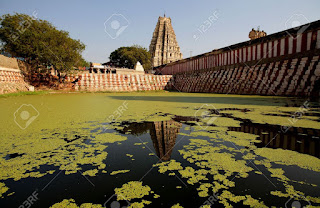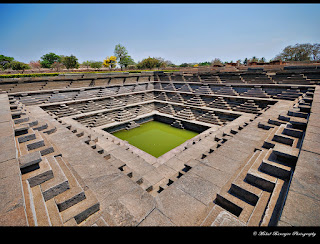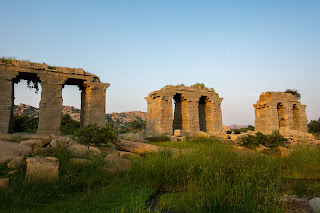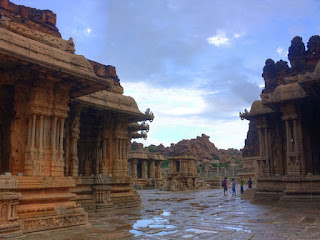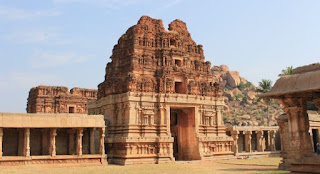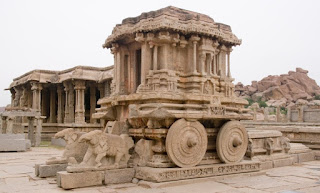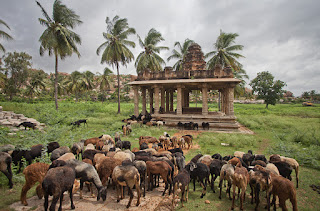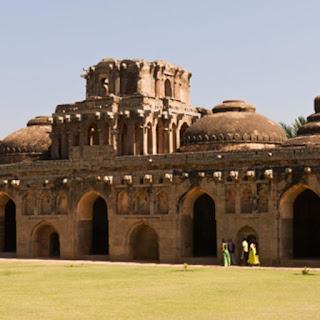ॐ श्री गुरुभ्यो नमः ॐ श्री शिवानन्दाय नमः ॐ श्री चिदानन्दाय नमः ॐ श्री दुर्गायै नमः
Source of all Images in this Blog-post : Google Images : ‘Google Image Search’ will reveal the multiple sources of every single image shared in this Blog. For more details, kindly see ‘Disclaimer‘
Introduction
Nestled on the banks of the sacred Tungabhadra River in Karnataka, India, lies Hampi, an archaeological wonder that whispers tales of grandeur, spirituality, and the ebb and flow of an empire that once was. This UNESCO World Heritage site, known for its extensive ruins that span over 4,100 hectares, offers a window into the life and times of the Vijayanagara Empire, one of the greatest Hindu empires in India’s history.
The archaeological site of Hampi is a breathtaking tapestry of history, adorned with countless, awe-inspiring ruined temple complexes from the illustrious Vijayanagara Empire. Each structure stands as a silent yet eloquent testament to a bygone era of splendor and architectural mastery.
The Historical Tapestry of Hampi
Hampi, the capital of the Vijayanagara Empire (1336 – 1565 AD), was not just an epicenter of political power but also a melting pot of culture and religion. Founded by Harihara I and Bukka Raya I, the city flourished under the patronage of rulers like Krishnadevaraya, reaching its zenith in the 15th century. Its strategic location made it a hub for trade, attracting traders from as far as Persia and Portugal.
The fall of Hampi, following the Battle of Talikota in 1565, led by a coalition of Islamic sultanates, marked the decline of a glorious era. The city was pillaged, leaving behind a hauntingly beautiful landscape filled with ruins, silently narrating its prosperous past and subsequent downfall.
The Architectural Grandeur of Hampi
The Hampi ruins are a testament to the exceptional craftsmanship of the Vijayanagara artisans. The site is dotted with over 1,600 remains, including temples, palaces, market streets, aquatic structures, and fortifications.
The site stands as a monumental testament to both historical and architectural brilliance. Under the diligent stewardship of the Archaeological Survey of India, ongoing excavations continue to unravel the rich tapestry of the past, shedding new light on the area’s remarkable legacy.
The Virupaksha Temple
At the heart of Hampi stands the majestic Virupaksha Temple, dedicated to Lord Shiva. It dates back to the 7th century and is one of the oldest and most significant structures in Hampi. The temple is renowned for its towering gopuram (gateway tower), intricate carvings, and the sacred sanctum that has been a continuous place of worship for centuries.
Vijaya Vittala Temple and the Stone Chariot
The Vijaya Vittala Temple is an architectural masterpiece known for its extraordinary craftsmanship. The highlight is the iconic Stone Chariot, a shrine built in the form of a temple chariot, which has become a symbol of Karnataka’s rich heritage. The temple complex also houses the famous musical pillars that emit musical notes when tapped.

Other Notable Structures
Hampi is home to many other remarkable structures, such as the Lotus Mahal, an elegant pavilion with Islamic architectural influences, and the Queen’s Bath, a royal aquatic enclosure. The Hemakuta Hill Temples, with their cluster of ancient shrines, and the Monolithic Bull, are other significant attractions.

The Cultural and Spiritual Essence of Hampi
Hampi is not just an archaeological site but also a living cultural landscape. The annual Hampi Utsav celebrates the region’s history, dance, music, and arts, drawing visitors from across the globe. The site continues to be a place of spiritual importance, with the Virupaksha Temple and other active temples playing a pivotal role in the religious life of the locals.

Preservation Efforts and Tourism
The preservation of Hampi is critical, considering its historical significance and vulnerability to natural and human-induced threats. Efforts by the Archaeological Survey of India and other organizations aim to conserve and restore this historical treasure.
Tourists visiting Hampi are transported back in time, walking through ancient marketplaces, climbing boulder-strewn hills, and marveling at the remains of a once-thriving empire. Hampi is not just a destination; it’s an experience, an immersion into India’s rich historical and cultural legacy.

Conclusion
The ruins of Hampi stand as a resilient reminder of India’s splendid past, showcasing the ingenuity and spirit of its people. As you wander through these ancient ruins, each stone tells a story, each monument sings a song of a bygone era, leaving visitors with a sense of awe and reverence for the rich tapestry of Indian history. Hampi, with its ruins cradled by the Tungabhadra River, continues to be a beacon of India’s cultural and historical magnificence.
The historical site of Hampi offers a visual symphony, with each image unfolding like a masterpiece, offering a feast for the eyes that transcends time and captivates the soul. Here are a few more images :










